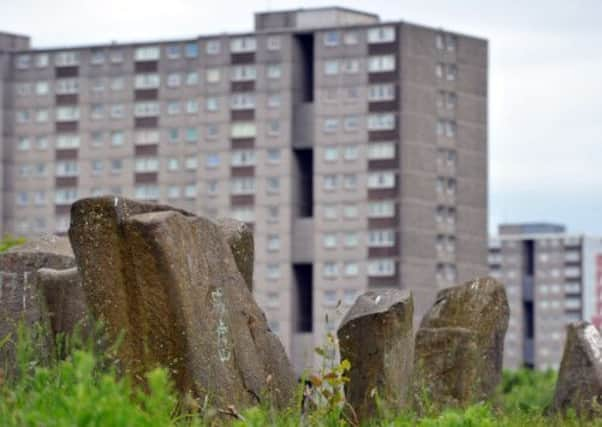Stuart Braithwaite on the Sighthill Stone Circle


For the uninitiated, the stone circle is at the highest point of Sighthill Park in Glasgow. It was built in 1979 by Duncan Lunan and, amongst others, my late father John Braithwaite. It was the first astronomically-aligned stone circle made in Scotland for thousands of years, since the time of the druids. Alas, it is under threat of demolition due to the redevelopment of Sighthill by Glasgow City Council. Its very future is uncertain.
My reasons for wanting to keep the stones are very personal, but those apart I think that it is exactly the type of place that should be celebrated and maintained for a myriad of reasons, as it means so much to so many people from many different strands of society and the local community itself.
Advertisement
Hide AdI have been involved in the campaign to save the stones and have helped organise a concert to raise awareness of their plight at platform in Easterhouse on 27 July. I will be performing, alongside Aidan Moffat, Emma Pollock, Eugene Kelly and RM Hubbert.
With unemployment rife in the late 1970s, the Glasgow Parks Astronomy Project was created as a means of helping the unemployed whilst also mobilising the city’s youngsters. The idea of building a Neolithic stone circle was actually that of a young schoolgirl who won a competition. With this in place, Duncan Lunan, the science writer and astronomer, was enlisted to make the project a reality. He in turn enlisted my late father, who was a scientific instrument maker, to help realise the project.
The stones were located after rigorous searching throughout Scotland in a quarry in Kilsyth and subsequently airlifted into the park in Sighthill by an army helicopter. The schools in Glasgow were given the day off to witness this. It’s a romantic story, how this came to be. The only sad part is that it looks like it may not achieve the happily-ever-after ending that those of us with the stones dear to our heart would like.
As in all good stories, the misfortune of the stones features a memorable villain. After her election in 1979 one of the first pronouncements made by Margaret Thatcher was that no more money was to be wasted on the likes of the Glasgow Parks Astronomy Project. The timing of this interjection was not great as the stone circle was not complete. To this day one of the alignment stones, as well as another stone that would have carried the dedications to Professor Archie Roy, Professor Alexander Thom, Dr Archie Thom, and Dr Euan MacKie, remain unerected nearby to where the other stones stand.
There is also an element of tragi- comedy in the timing of the news of the threat of the stones’ demise, as it was received from Glasgow City Council within days of Duncan Lunan receiving copies of his book on the stones, The Stone And The Stars, back from the publishers.
When news of the threat to the stones came, a campaign was mobilised comprising of people as diverse as the astronomer royal John Brown, those from the Pagan and Druid community who viewed the stones from a faith point of view, and those who simply do not like to see wonderful places destroyed. The campaign is ongoing and at the moment it looks like the stones in their present place may not remain, though plans are afoot to find a new home for them in Glasgow and maintain the vital part of the history of the city that they hold.
Advertisement
Hide AdMy father wasn’t the only Braithwaite involved in the project. My grandfather Bill Braithwaite was also a scientific instrument maker and was an advisor. Having a close family connection to the stones is important for me but I think even without it I’d be protective of them. Scotland is an amazing place, full of amazing people and stories, and I think far too often the powers that be feel that to make anything new, everything old has to be flattened in the process. I also think that after everything negative that Thatcher did to Scotland and its people, to complete her work for her after she’s gone would be doing us all a disservice.
As it stands the stones probably won’t remain in Sighthill, but promises have been made by the council that they will be saved and relocated elsewhere. Being part of the campaign to save them has been a great experience. Spending time with my father’s friends and meeting new people along the way has been great. If the campaign is successful then I hope, as the people who dreamed up the idea and toiled to make it a reality surely believed at the time, that the Sighthill Stone Circle will be here for thousands more years to come. • The Concert to Save the Sighthill Stone Circle is at Platform, Glasgow, on 27 July, with Stuart Braithwaite, the Twilight Sad, Aidan Moffat, Eugene Kelly, Emma Pollock, Remember Remember, RM Hubbert, and Adele Bethel (DJ set). Tickets are £6 and can be bought from Monorail, Platform and Tickets Scotland. A bus to the concert leaves Mono in Glasgow at 4:30pm on Saturday and returns at 11pm.